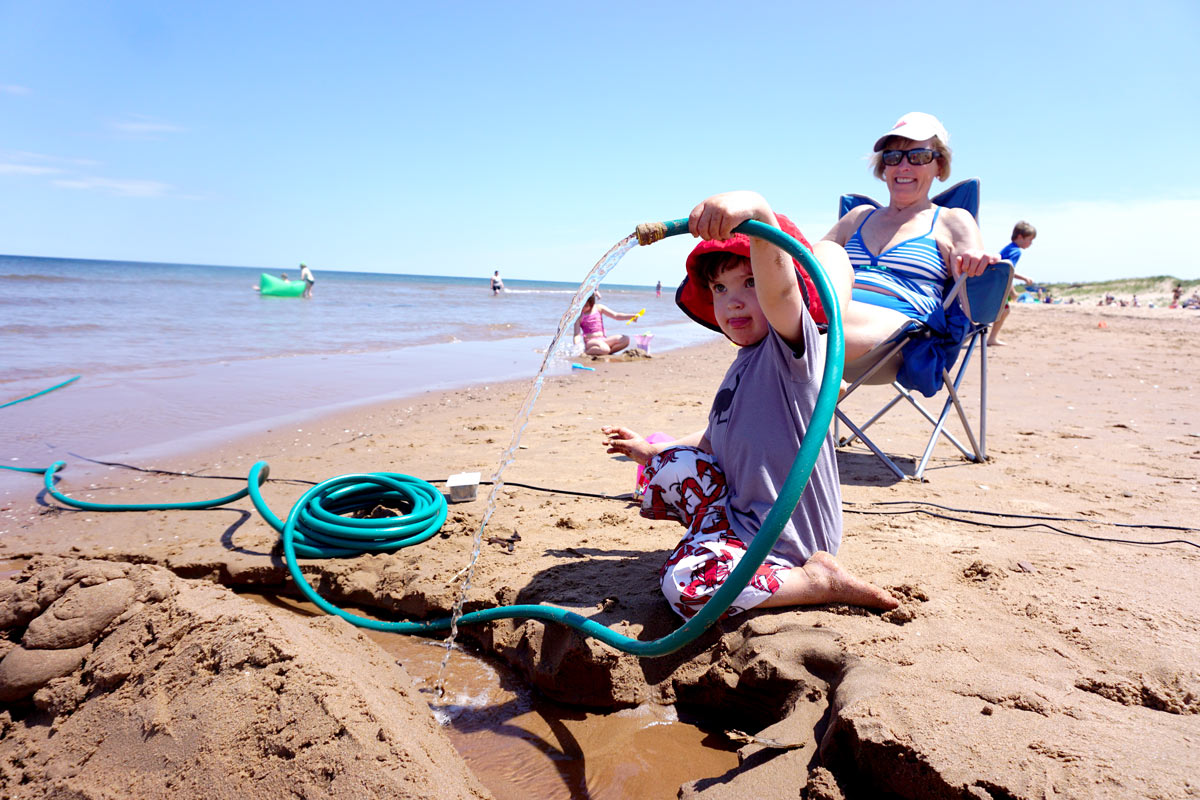
The Solar Beach Hose is a solar panel–powered bilge pump connected to a garden hose. It’s the absolute favorite beach toy for my kids, their friends, and their cousins. They make rivers to float boats down, fill buckets with water for making sand castles, spray each other, and have lots of fun. Ever since I made it, everyone that walks by on the beach wants one!
The solar panels are the type that are widely available for boats, RVs, and camping, and the whole project is very easy to make using inexpensive parts from the hardware store — no soldering is required.
Make Your Solar Beach Hose
We’re working with low voltage with this project, so electrical safety is not a concern. The 12V solar panels put out enough voltage to give you a little tingle, but are perfectly safe. We are using some components from 120V house wiring like the light switch, but that’s just for a reliable and convenient enclosure.



























